SONNY ROLLINS / “Lover Man”
The tenor saxophone was not always located in the land of Trane. Before Coltrane steamed into the station and long, long after John is gone round the bend, there was another godhead of the dominant horn in modern jazz. 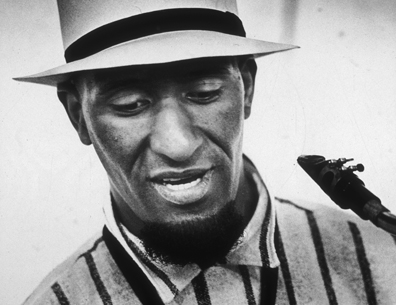
I’m a Trane freak but even for me, Sonny Rollins was the major saxophone figure whom I first revered. I heard, marveled at, and deeply enjoyed Sonny long before Trane’s sharper tone soothed something seething inside me. Indeed, in eight grade, I carved a drawing of Sonny soloing on a bridge into a piece of scrap leather and used my handiwork as a book marker for a couple of years.
I still smile recalling Sonny playing with Monk, the way they fit together, chased each other playing hide and go seek with the chord changes. Two things, well actually three elements enchanted me concerning Rollins’ approach to the horn.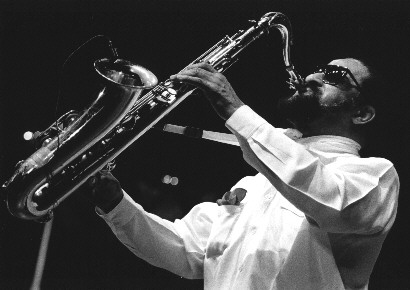
First was the heft of his sound. It sounded like Sonny could fill a boxcar without a microphone. At one point I was certain his horn weighed a ton and imagined that you had to have a champion caliber weightlifter in your throat to hoist a sonic blast that seemed as solid as a steel wrecking ball.
Second, my man played with humor. His phrasing made me laugh when he would quote other songs and make it seem so logical or the way he would toy with a phrase like a juggler with a knife, a lemon and an uncorked bottle of wine. You just knew something untoward was going to happen and yet, in Sonny’s hands the song always worked out.
But third, and most important of all, back in the sixties I never got the impression Sonny Rollins was coasting. His playing always sounded serious. However after achieving near legendary status, Sonny went into a retirement and nothing was heard from him on the professional scene.
This was right around the time Ornette and Trane emerged commanding the two alternative paths forward for the future of jazz. Ornette had a song form that was akin to early blues—it’s own powerful voice, elastic and theoretically so simple a child could get it, which is what happened with Ornette recorded with his twelve year-old son Donardo on drums. But Ornette's simplicity was also radical, so radical that a number of critics questioned whether Ornette could actually play.
Trane on the other hand was a walking manual of advanced harmonic postulates. If you were not conversant with calculus and physics, it was no sense in trying to make sense of Trane’s mathematics.
Of the three, Sonny was initially the church I attended. I compared every other preacher to Newk, so nicknamed because of his resemblance to Brooklyn Dodger pitcher Don Newcomb. I spent many an hour in the third bedroom that we used as a den after my father cut a door through the back wall so you go straight to the kitchen without walking around the whole house.
By then I was a serious collector, which required a major step up from a standard record player, so I kept my records and the turntable with Acoustic Research speakers in the den and would lay on the couch next to the window overlooking the backyard, content to spend hours on end listening to jazz and pondering the major questions of life.
Two of those major questions were Our Man In Jazz and East Broadway Rundown, albums by Sonny Rollins fronting a piano-less quartet, each of which shadowed the paths charted by Ornette Coleman and John Coltrane respectively.
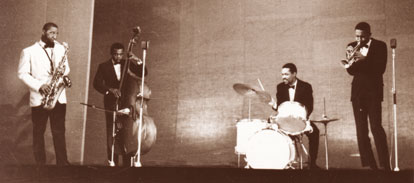
Rollins, Grimes, Higgins & Cherry
For Our Man In Jazz, Sonny used his regular bass player Bob Cranshaw (Henry Grimes would later fill the bass chair) and two stalwarts from Ornette’s band: Don Cherry on pocket trumpet and cornet, and Billy Higgins on drums. On East Broadway Rundown, Sonny used Freddie Hubbard on trumpet (the same man Coltrane called on for a number of major recordings including the wild, wild Ascension session; come to think of it, I believe that Ornette used Freddie on the double-quartet session for Free Jazz). Sonny also called on Trane’s rhythm conductors in the form of Jimmy Garrison on bass and Elvin Jones on drums.
Without hearing one note, just from reading the line up, an up-to-date jazz head knew that both records were going to be major statements and they did not disappoint. Both albums were soaked in the blues and as such, these seminal recordings made clear that the way forward started with a step backward.
The Ornette path was like the old country blues and them cats working a guitar string with the back of a pocket knife and playing in a multiplicity of keys unnoted on paper. Trane’s way ran through the early New Orleans horn players, especially Sidney Bechet whose soprano dripped the swamp goo that runaways trod.
Ornette’s path was open, full of dancing rhythms and joyous, lyrical flights, sort of like working in an open field. Trane was deep in the woods, felling trees, uprooting stumps, heavy lifting. Listen to the contrast between Billy Higgins and Elvin Jones, that alone clues you to the stylistic differences.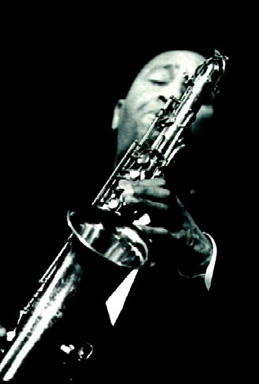
Both albums represent Sonny at his most experimental. I’ve selected long cuts even though each band recorded a number of much shorter numbers. I believe the two songs, “Oleo” and “East Broadway Rundown,” both of which are Sonny Rollins compositions, are the ultimate showcases not only for comparison and contrasting purposes but also as full statements of Rollins’ pursuit of the new.
Sonny had made his reputation as a hard bopper with an encyclopedic knowledge of standards, and though he continued to play standards, these recordings from his piano-less quartets are totally unorthodox in their articulation and arrangement of old standards.
These albums show Sonny at the crossroads, testing the waters, trying to figure out the way ahead for him. Within five years Trane would make his transition, and dominant the earthy scene as a ghost that haunted all of jazz. Whereas, Ornette would move off into harmolodics and become broadly respected as an innovator but not followed as a leader. And, ironically, after another brief retirement, Sonny would return to the post-bop, hard bop path.
An additional irony is that the feature cut is “Lover Man,” an old standard played in duet with Coleman Hawkins, the dean of the tenor saxophone. This is from the album Sonny Meets Hawk! You can hear how part of Sonny’s sound and part of his approach is directly descendent from Hawkins. You can also hear the differences, especially when Sonny shoots off into the upper reaches of the stratosphere.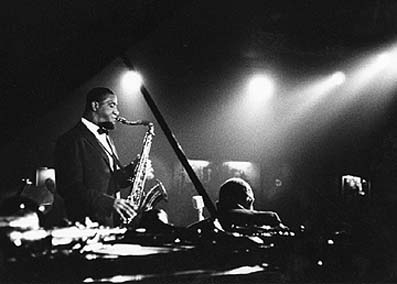
At this particular moment in Sonny’s history, he is questioning any and all authorities. On "East Broadway Rundown" he even questions the horn as an instrument. At one point he physically dismantles his horn and only blows the mouthpiece.
The sixties were pivotal years. Think of it as both a civil rights struggle against old authorities and liberation movement for total self-determination. This is not music to relax to with a glass of wine. This is about smashing the system and coming up with something new. There is more tension than relaxation, more questions than answers, more probing than caressing.
Even today, over forty years later, Rollins’ experimental music remains challenging, even at times difficult but that is to be expected; freedom is an arduous undertaking.
—Kalamu ya Salaam
This entry was posted on Monday, February 2nd, 2009 at 1:01 am and is filed under Classic. You can follow any responses to this entry through the RSS 2.0 feed. You can leave a response, or trackback from your own site.
One Response to “SONNY ROLLINS / “Lover Man””
February 5th, 2009 at 10:43 am
I saw Sonny Rollins in NY one summer at one of those free Lincoln Center concerts. He was over 70 and still played for about two hours straight with vigor and enthusiasm. A great performer and a consummate artist.
Leave a Reply
| top |